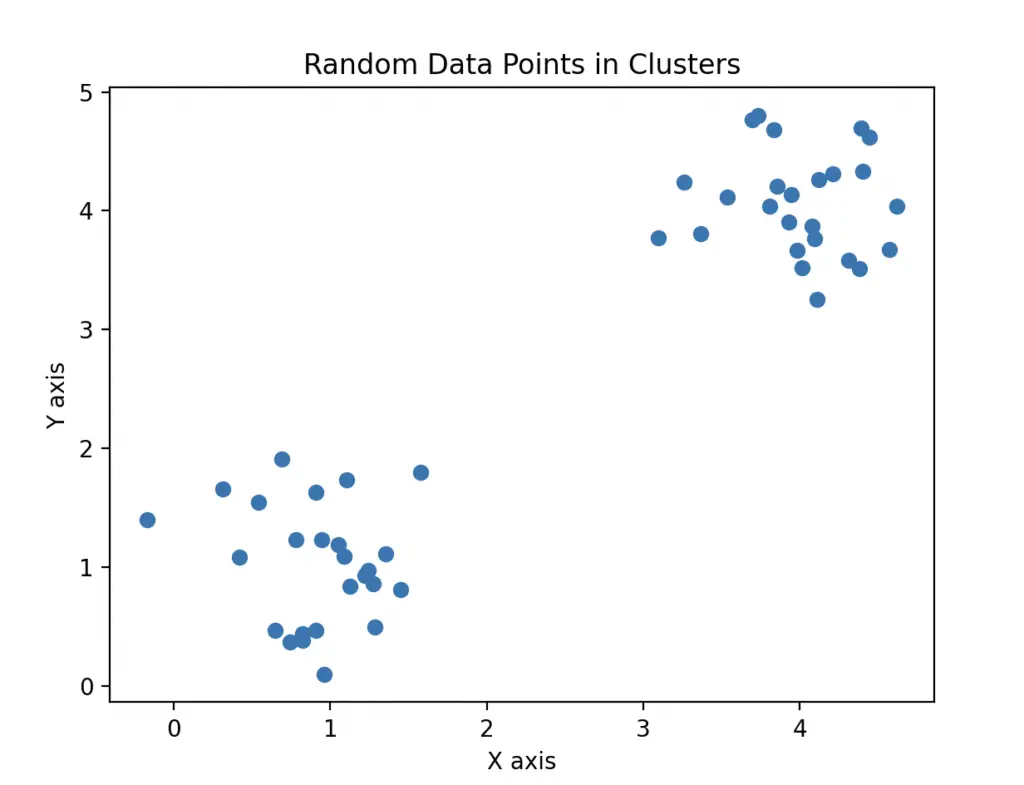When was the last time your computer or an app offered suggestions for you based on something you might like or enjoy? That is one of the benefits of Applied Machine Learning.
The world is advancing fast, Machine learning and Artificial Intelligence based projects are what the future holds. This article provides insight into the exciting course of Applied Machine Learning with the Python programming language.
What is Applied Machine Learning (AML)?

The term “Applied Machine Learning” refers to the use of Machine Learning (ML) to solve various data-related problems.
Applied Machine Learning (AML) differs from theoretical machine learning – which is about understanding underlying algorithms, and statistics at the most fundamental level. It is not just about understanding these concepts, but also about solving real-world problems with them.
It is a subset of Artificial Intelligence that enables computer systems to learn and predict based on input data. The aim is for systems to learn automatically without human intervention and act accordingly.
Brief History of Applied Machine Learning
Machine learning is based on a model of brain-cell interaction. Donald Hebb developed this model in 1949 in his book titled The Organization of Behavior. The book discusses Hebb’s theories on neuron excitement and communication.
The first AML program was written by Arthur Samuel in 1952. The program’s goal was to play a game of checkers and the program was taught to correct its mistakes and improve its checker skills.
Applied Machine Learning Examples
AML has enabled our apps to see, hear, and respond, therefore improving user experience and adding value across many industries. It has also enabled more personalized recommendations and improved search functionality.
Here are some examples of the unique power of Applied Machine Learning:
Speech Recognition

When you ask Siri to perform an action with your iPhone (like opening an app, calling a friend, or searching the Internet) you are witnessing AML in action.
Siri is programmed to convert spoken words into actions. It constantly learns new words through user interaction to provide users with a better experience.
Another speech recognition assistant that you may be familiar with is Alexa.
Related Items

What do you notice when you look at a product on Amazon?
At the bottom of the product description, you will most likely find a section labeled “Customers also bought these items”. For example, when viewing a Laptop listing, Amazon will suggest a laptop bag, micro-USB cable, and mouse, as well as different variations of the laptop.
This is another example of AML in action known as “learning association.” Machines are taught to link one object to another.
Pattern Recognition
Pattern recognition in AML refers to the process of labeling specific data based on patterns. For example, if you keep watching Sci-Fi movies on Netflix, Netflix will recognize that pattern and recommend movies in the same genre.
The Basic Process of Applied Machine Learning
Here’s a breakdown of the basic process of Applied Machine Learning.
Step 1: Understand Machine Learning Models and Algorithms
You need to have a good understanding of machine learning concepts, models, algorithms, and statistics so you can learn how to apply them in practice.
Step 2: Identify the Problem You Want to Solve
The second step in the process is to define the problem you want to solve. The problem usually centers primarily on improving user experience and increasing value across a specific industry.
Step 3: Gather Necessary Data
AML models are created by training computer systems on large samples of data. The data is usually available in your specific business domain (e.g. historical user behavior data for an eCommerce website) and it needs to be relayed to developers for data analysis.
Step 4: Choose Your Programming Language
You will need a programming background to create and use machine learning models to solve real-world business problems.
Programming languages which are often used for machine learning include Python, R programming language, Java, Javascript, and Julia.
Step 5: Build Your Experience with Practice
Writing code is the best way to build your experience as a developer. You can start with one of the machine learning courses available to make sure you create a strong foundation for yourself in this area.
What Makes Python the Best Programming Language for AML?
Choosing a programming language for your machine learning project is an important step to get started.
Numerous programming languages are available and in the next sections, you will see why Python is a great programming language for machine learning.
Why is Python Recommended for Machine Learning?

Python ranks first in IEEE Spectrum’s annual ranking of popular programming languages, with over 8.2 million developers worldwide using it for coding.
It is the preferred programming language for some IT industry titans, including Google, Instagram, Facebook, and Netflix.
Python has quickly become the preferred language for Data Analytics, Data Science, and Applied Machine Learning. Here is why:
Extensive Collection of Libraries and Frameworks
Programmers use Python frameworks and libraries to reduce development time. Python’s built-in libraries and frameworks provide pre-written code, allowing machine learning engineers to avoid starting from scratch.
Data processing is required for machine learning, and Python has built-in libraries and packages for every programming task, including data processing. When working with complex machine learning applications, this helps machine learning engineers reduce development time and increase productivity.
The best thing about these libraries and packages is that there is a small learning curve. Once you understand Python programming fundamentals, you can begin using these libraries.
- Working with textual data? Use NLTK, scikit-learn, Pandas, and NumPy.
- Working with images? Use scikit-image and OpenCV.
- Are you working with audio? Use Librosa.
- Implementing Deep Learning? Use TensorFlow, Keras, and PyTorch.
- Implementing basic Machine Learning algorithms? Use Sci-Kit- learn.
- Want to do scientific computing? Use Sci-Py.
- Want to visualize a dataset? Use Matplotlib, Sci-Kit, and Seaborn.
Use these Python libraries to make sure your team does not reinvent the wheel!
Below you can see an example of Python code to plot random data points with two distinct clusters. This could represent a very simple clustering task in machine learning:
import matplotlib.pyplot as plt
import numpy as np
# Generate random data points in two clusters
x = np.append(np.random.normal(1, 0.5, 25), np.random.normal(4, 0.5, 25))
y = np.append(np.random.normal(1, 0.5, 25), np.random.normal(4, 0.5, 25))
# Plot
plt.scatter(x, y)
plt.title("Random Data Points in Clusters")
plt.xlabel("X axis")
plt.ylabel("Y axis")
plt.show()When you try this on your computer remember to install the matplotlib module.
In this code you do the following:
- Generate random data points centered around two different means (1 and 4 for both x and y coordinates), simulating two clusters.
- Use the
scatterfunction of the Matplotlib module to plot these points. - Add a title and axis labels to make the plot informative.
- Finally, call the
show()function to display the plot.
This type of data distribution is typical in clustering problems in machine learning, where the goal is to identify distinct groups in the data.
Here is the graph you plot with the code:

Code Readability

Python is widely regarded as a highly effective coding language due to its simple syntax and readability.
The math behind machine learning is typically complex. As a result, code readability is critical for successfully implementing complex machine-learning algorithms. This allows machine learning engineers to focus on the logic to write rather than on the syntax of the programming language.
Powerful and Fast
Python saves time and effort by presenting ready-made solutions when performing tasks like scientific calculations, and processing images. This is an advantage because it means a faster return on investment (ROI) due to the ability to quickly tailor software based on feedback from real users.
Flexibility
Python is capable of interacting with code written in other programming languages. This means you can create projects that combine Python with other programming languages (such as C++) to get the best of both worlds.
Additionally, Python is available for almost every operating system, including UNIX, Windows, macOS, iOS, and Android. It is also available on various platforms, including IBM, AIX, Solaris, and VMS.
Great Community and Popularity

Python was among the top five most popular programming languages in the Developer Survey 2020 by Stack Overflow. As a result, you can easily find and hire developers with the necessary skill set to build your AML-based project.
Python AI community has expanded globally in the last few years and it represents a great support for you as a developer.
Platform Independence
Python’s popularity stems from the fact that it is platform-independent. As a result, you can use Python code to create Machine Learning programs for most common operating systems.
Developers typically use computing services such as Google or Amazon. Companies and data scientists, on the other hand, frequently use their machines with powerful Graphics Processing Units (GPUs) to train their Machine Learning models. And the fact that Python is platform-independent makes this training much more affordable and simple.
Final Thoughts
Applied machine learning has become essential to modern business and research in many organizations. It has evolved into a critical tool for cloud computing and eCommerce, and it is now part of a wide range of cutting-edge technologies.
Python remains one of the best programming languages to help you explore Applied Machine Learning techniques. We have seen that it offers plenty of machine-learning libraries.

Claudio Sabato is an IT expert with over 15 years of professional experience in Python programming, Linux Systems Administration, Bash programming, and IT Systems Design. He is a professional certified by the Linux Professional Institute.
With a Master’s degree in Computer Science, he has a strong foundation in Software Engineering and a passion for robotics with Raspberry Pi.
